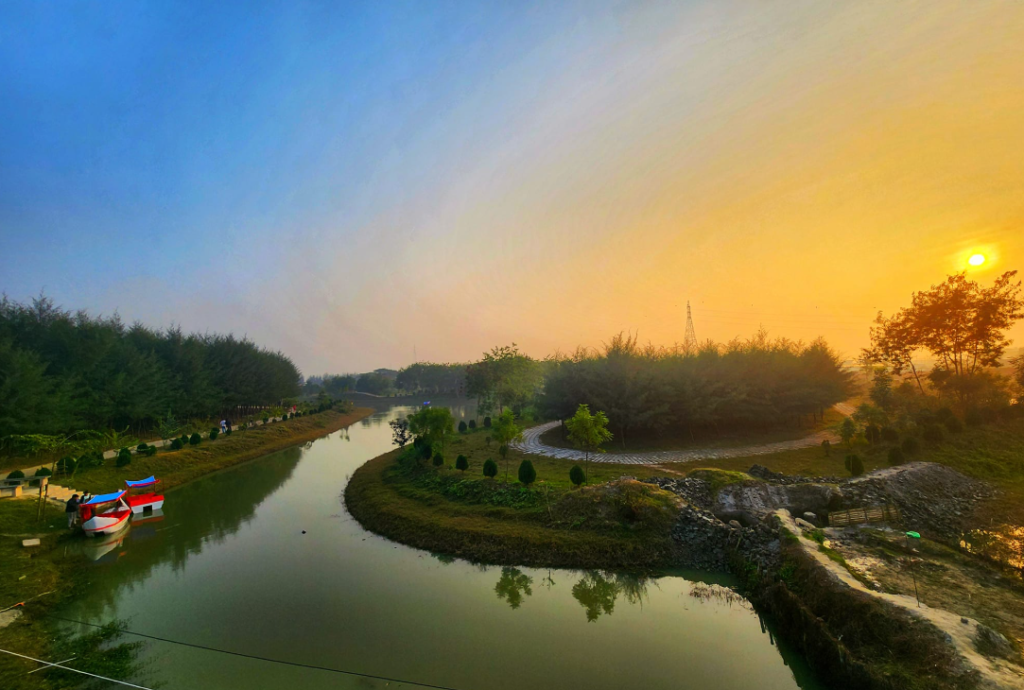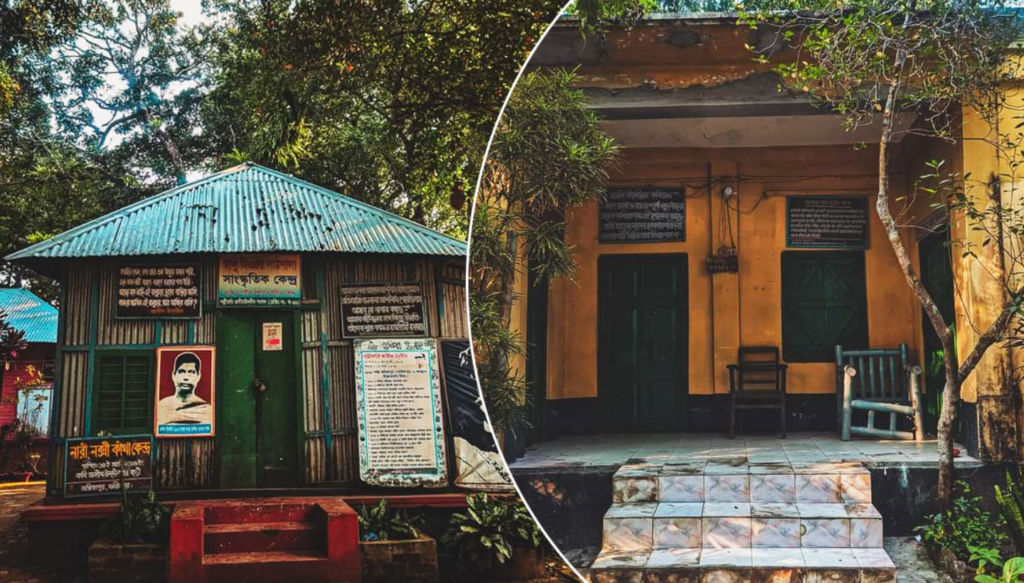Faridpur, located in the Dhaka division of Bangladesh, is a district that weaves together history, culture, and natural beauty. With its fertile plains, vibrant traditions, and historical significance, Faridpur is both a cultural hub and an agricultural powerhouse. It holds a unique position in the historical and socio-economic development of Bangladesh.
This region is deeply rooted in Bangladesh’s history, home to famous personalities, and features natural landscapes that make it a fascinating destination for both locals and tourists.
Geography and Natural Landscape
Spanning approximately 2,072 square kilometers, Faridpur is part of the central region of Bangladesh. It is crisscrossed by some of the country’s most important rivers, including the Padma, Arial Khan, Madhumati, and Kumar. These rivers not only enrich the region’s agriculture but also create scenic beauty, making it an attractive area for nature lovers.
The char (river islands) formed by these rivers are a unique feature of the district. These temporary landforms support seasonal farming and provide habitats for diverse flora and fauna. The region’s tropical monsoon climate contributes to its rich biodiversity and fertile soil, ideal for agricultural activities.
Historical Significance
The name Faridpur is derived from Shah Sheikh Fariduddin, a renowned 13th-century Islamic preacher and saint who influenced the spiritual and cultural fabric of the region. Faridpur has witnessed various historical phases, from the Mughal era to British colonial rule, and has played a vital role in shaping the nation’s history.
The district is notably associated with Bangabandhu Sheikh Mujibur Rahman, the Father of the Nation. Tungipara, part of the greater Faridpur region, is where he was born and is now a site of pilgrimage and historical importance.
Faridpur is also the birthplace of legendary poet Jasimuddin, known for his poetic depictions of rural Bengal and its culture. His works, such as “Nakshi Kanthar Math,” have immortalized the pastoral life and traditions of this region.
Economic Contributions
Faridpur’s economy is primarily agrarian, with agriculture forming the backbone of its livelihood. The district is a major producer of:
- Jute: Known as the “golden fiber,” this crop has historically been a significant export product.
- Rice: The staple food of Bangladesh, produced in abundance here.
- Mustard, lentils, and sugarcane: Important crops contributing to local and national markets.
In addition to agriculture, Faridpur has a growing small and medium enterprise (SME) sector, with local industries producing textiles, pottery, and handicrafts. With the establishment of the Padma Bridge, trade and communication have received a significant boost, positioning Faridpur as a key player in regional development.
Administrative Divisions (Upazilas)
Faridpur comprises nine upazilas, each with distinct features and contributions to the district:
- Faridpur Sadar: The administrative center, known for its educational institutions, markets, and government offices.
- Boalmari: Famous for its traditional crafts and agricultural practices.
- Nagarkanda: A peaceful region with lush greenery and serene rural landscapes.
- Bhanga: A key transport and trade hub, especially after the completion of the Padma Bridge.
- Madhukhali: Renowned for its fertile lands and vibrant rural community.
- Sadarpur: Offers picturesque views and is home to charming riverside villages.
- Charbhadrasan: Known for its vibrant fishing communities and riverine beauty.
- Shaltha: A tranquil area focusing on traditional farming and cultural festivals.
- Alfadanga: A rural area with a strong emphasis on community-based agriculture.
Tourist Attractions in Faridpur
Faridpur has several attractions that highlight its natural, cultural, and historical richness:

Sheikh Rasel Eco Park
- Sheikh Rasel Eco Park: A lush green park offering recreational activities and showcasing the region’s biodiversity.
- Jasimuddin’s House: The ancestral home of the poet, now preserved as a heritage site.
- Kumar River: Known for its serene environment, perfect for boating and riverside picnics.
- Fazlul Haque Memorial Library: A center preserving the literary and cultural heritage of the region.
- Baliati Zamindar Bari: Although slightly outside the district, it reflects the grandeur of Bengal’s zamindari system and is easily accessible from Faridpur.
Famous Personalities of Faridpur
Faridpur has been home to many notable personalities who have made significant contributions in various fields:

Jasimuddin’s House
- Bangabandhu Sheikh Mujibur Rahman: The architect of Bangladesh’s independence.
- Jasimuddin: A celebrated poet and cultural icon of rural Bengal.
- Ambica Charan Mazumdar: A prominent lawyer and political figure in pre-partition Bengal.
- Abbasuddin Ahmed: A legendary folk singer whose works enriched Bengali music.
Cultural Heritage and Festivals
Faridpur is a cultural hub where music, literature, and art flourish. The legacy of Jasimuddin has kept traditional Bengali folk culture alive in this district. Festivals like Pohela Boishakh (Bengali New Year) and Durga Puja are celebrated with great enthusiasm.
Local music, including Baul and Lalon songs, resonates in the hearts of the people. The district also hosts fairs and events that showcase traditional crafts, agricultural produce, and cultural performances.
Cuisine of Faridpur
Faridpur’s cuisine is a delightful representation of Bengali culinary traditions. Popular dishes include:
- Fish curries made from fresh catches from the rivers.
- Panta bhaat (fermented rice) paired with mustard hilsa.
- Locally made sweets like roshogolla, curd, and pithas (traditional cakes).
Development and Future Prospects
The construction of the Padma Bridge has been a game-changer for Faridpur, connecting it more effectively with the rest of the country. Improved infrastructure, alongside the district’s natural and economic resources, is paving the way for industrialization and urbanization.
Efforts to preserve the district’s rich cultural heritage and develop eco-tourism are ongoing. Faridpur is gradually transforming into a modern hub while retaining its historical charm.
Conclusion
Faridpur stands as a testament to the harmonious blend of history, culture, and natural beauty. From its contributions to agriculture and literature to its scenic rivers and heritage sites, the district captures the essence of rural Bengal.
Whether you are exploring its lush countryside, delving into its rich history, or enjoying its traditional music and cuisine, Faridpur promises a memorable experience that reflects the heart of Bangladesh.




